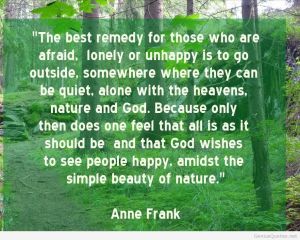By Heila Rogers
What if someone has a wonderful talent, and works to paint an amazing painting, mold a glorious sculpture, or write a magnificent, universal character?
Certainly that person as an artist is contributing greatly to society by adding beauty to it.
What if that same person cuts you off in traffic, exploits or curses others, or lies habitually?
What if someone else creates then in a different form? This one consisting of small gestures, or actions that make good grow in people’s hearts?
Someone say, who slows down without bitterness when they’re cut off in traffic, someone who strives to thank people and lift them up, someone who honors others with truths — like the one that they matter to the world?
Actually we all fall into both categories, I think. We’re all both creators and destroyers.
What I want to explore is how we can create in miniscule ways throughout each day. How we can all become better Life Artists. Weaving, or painting, or sculpting beauty and love into and out of each day.
Although we all appreciate great art, don’t the small moments of kindness we’ve experienced in our own lives stand out more brightly? Can’t we recall moments of forgiveness, warmth, and sacrificial care more quickly than we can remember the best painting or movie we’ve ever seen?
So the question is, does Great Art – also consist of kindness, forgiveness and love?

Is beauty always a recipe that contains some measure of the above?
Back to the small acts and kindnesses.
I appreciate genuine smiles so much.
Even just “the dignity of notice” is something that is supremely valuable.
Watching the documentary, Marina Abramovic: The Artist Is Present made me think a lot about this kind of thing. Then I read an article about Fred Rogers of the PBS children’s show, Mister Rogers’ Neighborhood, that made me think even more about how to create, by loving people individually.
What the artist Marina did, for this performance art piece was sit in a chair for hours at a time in a museum and face the person who sat in a chair opposite her. All day long, she did only this. She didn’t eat or drink during that time. She spent the nights during the show, drinking and going to the bathroom.
Although her motives for doing what she did are perhaps not completely clear, it is evident that she operated on a plane where she was seeking to receive and communicate truth. She was also willing to be uncomfortable in the process.
That was it. She met their eyes, she communicated as much as she could without words. She tried to “listen” to them on a deep level. She tried to see them. Just the act of giving attention was powerful. No touching or speaking was allowed.
Someone commented:
“She is treating each person that she encounters with the same attention and the same respect and that is pretty shocking.”
Isn’t it sad, that it’s shocking? That to, “treat each person that we encounter with the same attention and the same respect” is so unusual?
She and the others involved in different live art pieces actually prepared heavily in different ways for their performances. For example, they practiced being still and slowing down their breathing. They confronted things within themselves, in anticipation of being in front of people and offering up something. They spent a lot of time in silence, thinking.
I think that every person needs something like this, to be able to give to others in any way. We need strength from outside ourselves.
Another thing about this particular performance art was that everyone was watching the whole thing. People came to the museum to see the exhibit, which was two people sitting across from one another in silence.
Another aspect of note about it was that people practically hurt each other rushing into the museum, trying to compete to be the ones to sit in the empty chair.
My favorite moment is when two young kids replicate the performance and are cross-legged, sitting on the floor right there facing one another, staring. Of course they would copy the adults, but they also create something new of their own in that moment.
We can create in this way.
In contrast to the above, but with some of the same elements, check out the following private moment behind closed doors.
This excerpt is from a wonderful article written by Tom Junod in Esquire magazine, and it’s a story about Mr. Rogers and his minister whom he asks a favor of, and then includes the journalist in the interaction.
Mr. Rogers began creating the moment he met this journalist. He began looking at him and really listening. He tried to really see his life. He cared about him and expressed that. He also was simply himself in the process of interaction. Doing what he did in his own particular way, even when that could’ve been seen as geeky or peculiar. The article is entitled, “Can You Say … Hero?”
The below example to me, is an amazing one of the quiet art of living. Of being a life artist. Attuned to others and oneself, free in the knowledge of one’s value, and that one has the ear of God. After getting to know both the journalist and the minister, Fred Rogers was in a room with just the two of them, behind a closed door. They all touched.
The next afternoon, I [writer Tom Junod] went to [Fred Rogers’] office in Pittsburgh. He was sitting on a couch, under a framed rendering of the Greek word for grace and a biblical phrase written in Hebrew that means “I am my beloved’s, and my beloved is mine.” A woman was with him, sitting in a big chair. Her name was Deb. She was very pretty. She had a long face and a dark blush to her skin. She had curls in her hair and stars at the centers of her eyes. She was a minister at Fred Rogers’s church. She spent much of her time tending to the sick and the dying. Fred Rogers loved her very much, and so, out of nowhere, he smiled and put his hand over hers. “Will you be with me when I die?” he asked her, and when she said yes, he said, “Oh, thank you, my dear.” Then, with his hand still over hers and his eyes looking straight into hers, he said, “Deb, do you know what a great prayer you are? Do you know that about yourself? Your prayers are just wonderful.” Then he looked at me. I was sitting in a small chair by the door, and he said, “Tom, would you close the door, please?” I closed the door and sat back down. “Thanks, my dear,” he said to me, then turned back to Deb. “Now, Deb, I’d like to ask you a favor,” he said. “Would you lead us? Would you lead us in prayer?”
Deb stiffened for a second, and she let out a breath, and her color got deeper. “Oh, I don’t know, Fred,” she said. “I don’t know if I want to put on a performance….”
Fred never stopped looking at her or let go of her hand. “It’s not a performance. It’s just a meeting of friends,” he said. He moved his hand from her wrist to her palm and extended his other hand to me. I took it and then put my hand around her free hand. His hand was warm, hers was cool, and we bowed our heads, and closed our eyes, and I heard Deb’s voice calling out for the grace of God. What is grace? I’m not certain; all I know is that my heart felt like a spike, and then, in that room, it opened and felt like an umbrella. I had never prayed like that before, ever. I had always been a great prayer, a powerful one, but only fitfully, only out of guilt, only when fear and desperation drove me to it…and it hit me, right then, with my eyes closed, that this was the moment Fred Rogers—Mister Rogers—had been leading me to from the moment he answered the door of his apartment in his bathrobe and asked me about Old Rabbit. Once upon a time, you see, I lost something, and prayed to get it back, but when I lost it the second time, I didn’t, and now this was it, the missing word, the unuttered promise, the prayer I’d been waiting to say a very long time.
“Thank you, God,” Mister Rogers said.
No one else saw or experienced this moment, even though we’re all now getting a chance to read about it. The moment itself however, was experienced between only those present. It was made possible by brushstroke after brushstroke, so to speak, of friendliness, of building trust and mutual enjoyment, of kind words and attentive actions and time spent together.

By Tom Junod – “Can You Say … Hero?”
Originally appeared in the November 1998 Esquire. Find the complete article here.



















